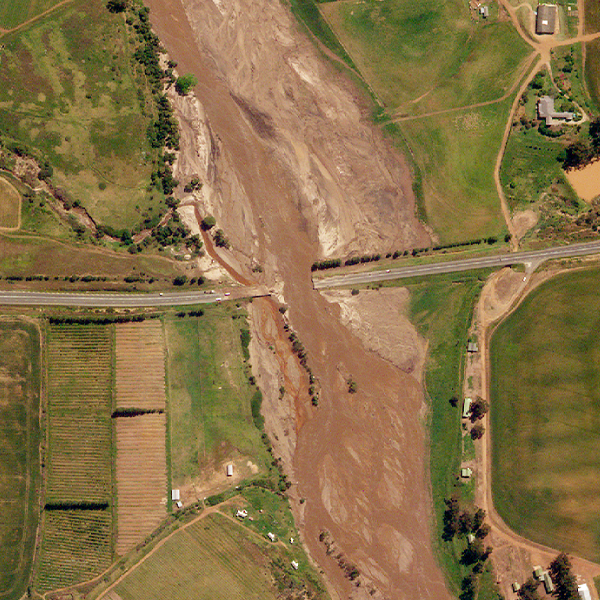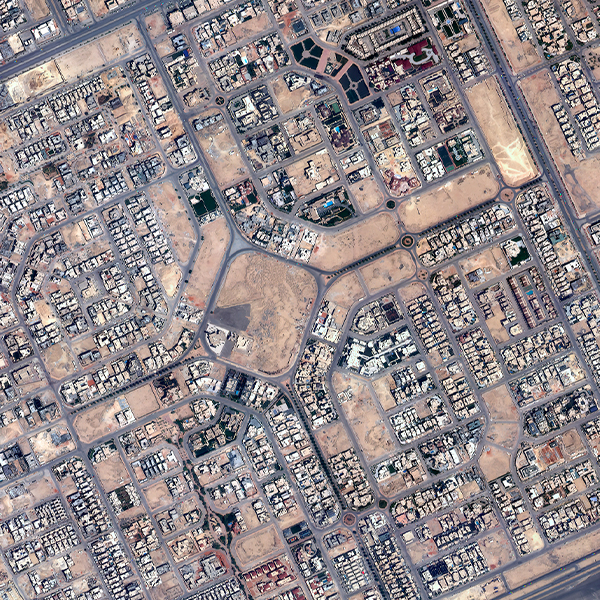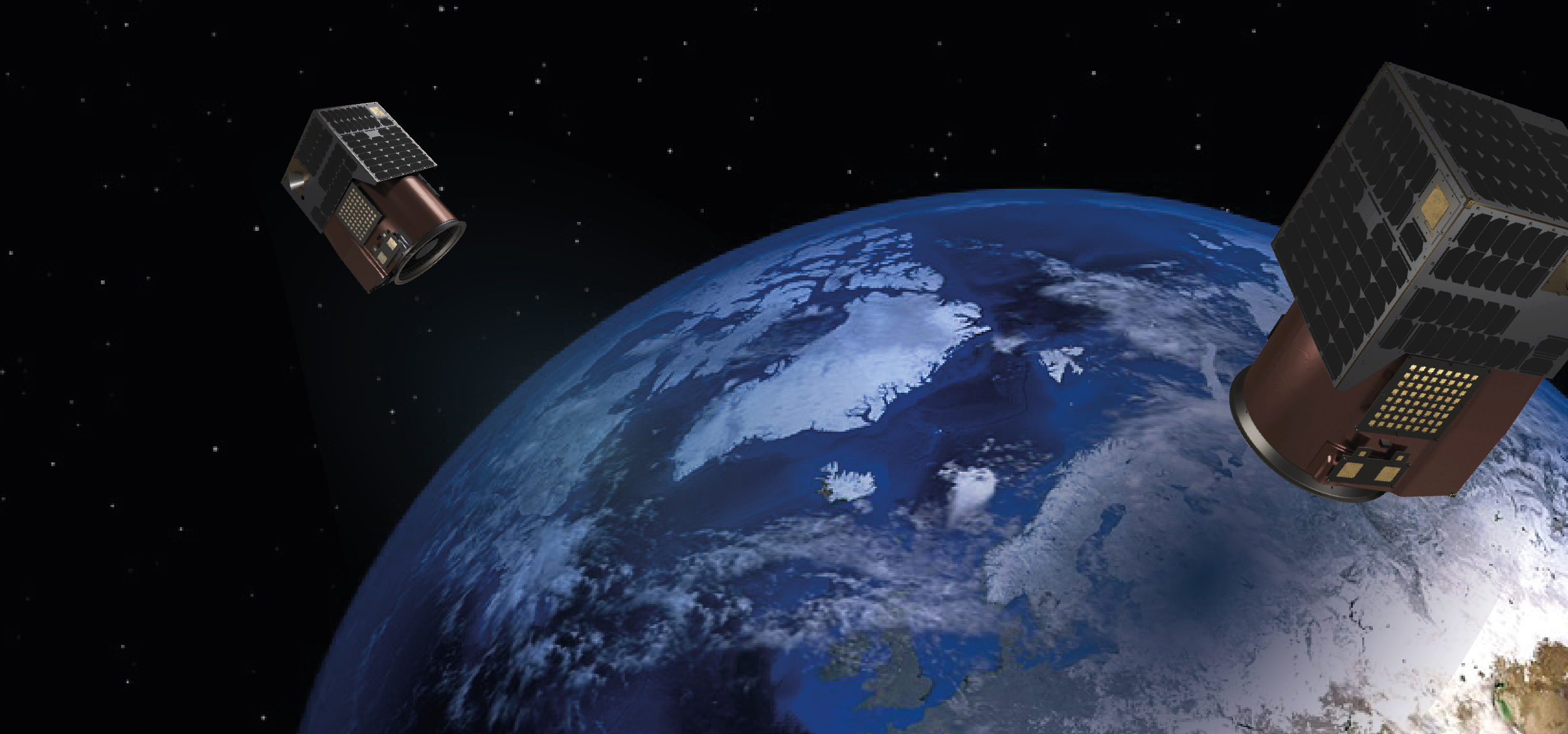
Celebrating Women in STEM
By The Satellogic Team
We are committed to recognizing women who, despite societal opposition and professional obstacles, contributed to some of humanity’s greatest scientific achievements.
In 2018, we began what would become a celebrated tradition: naming our satellites after remarkable women in science, technology, engineering, and mathematics (STEM).
Thus far, we have chosen these 19 courageous pioneers who made discoveries and significant contributions to their respective fields that changed the world forever:
Ada Lovelace (NewSat-4) 1815-1852
Considered the world’s first computer programmer, Ada recognized Babbage’s Analytical Machine (general purpose computer) had potential for applications beyond pure calculation and even published the first algorithm intended to be carried out by such a machine.
Maryam Mirzakhani (NewSat-5) 1977-2017
The first woman and Iranian to receive the Fields Medal, Maryam was a world-renown mathematician and Ivy League professor. She is celebrated for her research in hyperbolic geometry, ergodic theory, symplectic geometry, and Teichmüller theory.
Hypatia (NewSat-6) 360-415
The earliest known woman of Greek academia, Hypatia was a celebrated Neoplatonist philosopher, astronomer, and mathematician studying and teaching across Egypt, Alexandria, and the Roman Empire. Despite her status as the best mathematician of the age, she was murdered by Christian zealots who claimed she was a witch.
Sophie Germain (NewSat-7) 1776-1831
A self-taught physicist, mathematician, and philosopher, Sophie defied her family to pursue her education. She developed theories on elasticity used to design the Eiffel Tower, which earned her the grand prize from the French Academy of Sciences, and made the first contribution to Fermat’s Last Theorem.
Marie Curie (NewSat-8) 1867-1934
Initially educated through informal underground classes, Marie went on to become the first woman graduate and professor in France. Recognized for her theory of radioactivity, advancement of x-ray technology, and the discovery of two elements, She was also the first woman awarded a Nobel Prize and first scientist to receive two Nobel Prizes.
Alice Ball (NewSat-9) 1892-1916
A chemist and inventor of the “Ball Method”, Alice made history by developing the most effective treatment for leprosy during the early 20th century—a highly stigmatized disease that left most patients exiled with no hope of recovery. She was also the first woman and first African American to earn a master’s degree from the University of Hawaii.
Caroline Herschel (NewSat-10) 1750-1848
An astronomer recognized for her discovery of comets, Caroline also gained notoriety for her many firsts. Over the course of her long careers she would become the first woman to: receive a salary as a scientist, hold a government position in England, publish scientific findings in the Philosophical Transactions of the Royal Society, become an Honorary Member of the Royal Astronomical Society and receive its Gold Medal award.
Cora Ratto (NewSat-11) 1912-1981
Mathematician, professor, and life-long activist, Cora devoted much of her life to combating powers of oppression, discrimination, and racism across the world. Academically, she published textbooks and organized advanced college courses at the University of Buenos Aires, later establishing the Albert Einstein Foundation, a university-wide scholarship program.
Dorothy Vaughan (NewSat-12)1910-2008
A mathematician and (human) computer, Dorothy became the first African-American woman acting supervisor at Langley Research Center. She taught herself and her staff the programming language FORTRAN, and later headed the programming section of the Analysis and Computation Division (ACD) at Langley.
Emmy Noether (NewSat-13) 1882-1935
A prominent mathematician, Emmy developed the Noether’s theorem (fundamental to mathematical physics with great impact on classical and quantum mechanics) and made groundbreaking contributions to abstract algebra. She was a celebrated professor at universities worldwide by students and icons like Einstein and Alexandrov, but often unpaid for her work.
Hedy Lamarr (NewSat-14) 1914-2000
Actor, film producer, and inventor, Hedy’s tinkering led to an improved traffic stoplight and a dissolvable tablet for drinks. Most importantly, however, she designed and patented a frequency-hopping signal for torpedoes to eliminate tracking and jamming. An updated version was installed on US Navy ships in 1962 amid the Cuban Missile Crisis.
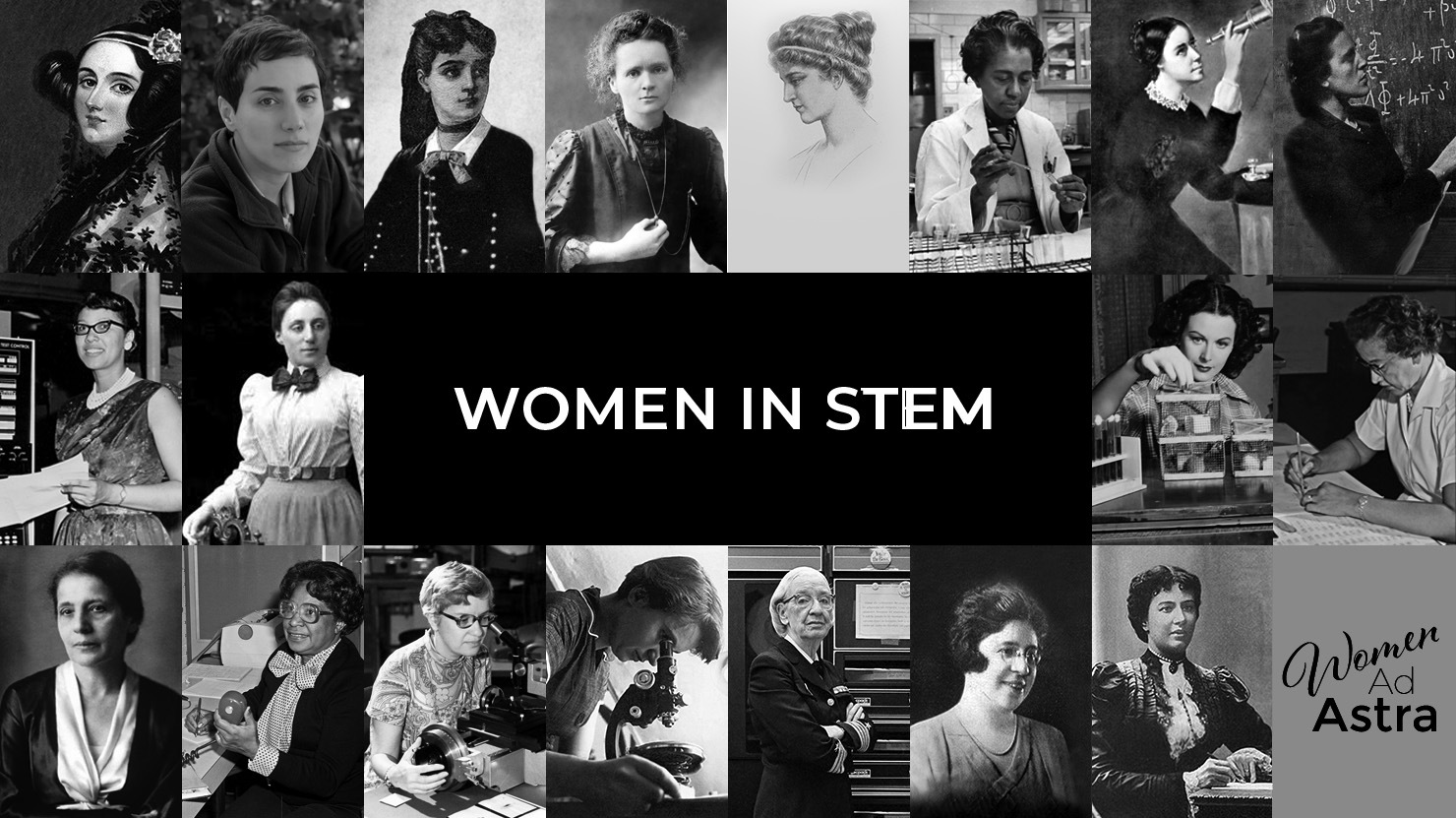
Katherine Johnson (NewSat-15) 1918-2020
A gifted mathematician, Katherine calculated the orbital mechanics that put the first man in space (and many subsequent crewed missions). She became the first African-American woman scientists at NASA and achieved many awards during her 33-year career. NASA’s mission operations center in Houston Texas was renamed in her honor.
Lise Meitner (NewSat-16) 1878-1968
A leading physicist, Lise was the second woman in the world to earn a doctorate in physics and the first from University of Vienna, where she discovered the element protactinium and became the first woman professor in Germany. Due to the anti-jewish Nuremburg Laws, she lost her position and fled to Sweden where she later discovered nuclear fission.
Mary Jackson (NewSat-17) 1921-2005
After successfully petitioning to attend all-white classes required for the advancement of her career, Mary became the first African-American engineer at NASA. She authored 12 technical papers, achieved the highest level position in her department, and championed the promotion of women and minorities across NASA NASA’s headquarters in Washington, D.C. was renamed in her honor.
Vera Rubin (NewSat-18) 1928-2016
A pioneering astronomer, Vera’s observations included the first evidence of dark matter and galactic superclusters. She became the first woman astronomer at Palomar Observatory (Carnegie Institute) and was an active advocate for women in science. She was the second woman to receive the Gold Medal of the Royal Astronomical Society, following Caroline Herschel in 1828.
Rosalind Franklin (NewSat-19) 1920-1958
Many decades after her untimely death, Rosalind was recognized as a key contributor to one of the most important discoveries in history: DNA. As a chemist and X-ray crystallographer, she helped reveal the double helix shape of DNA and built the foundation for the field of structural virology through her RNA research.
Grace Hopper (NewSat-20) 1906-1992
A computer pioneer and naval officer, Grace invented the first compiler and developed the first programming languages (COBOL and FORTRAN). Among many other achievements, she retired as the oldest living Naval officer, rising to the rank of Rear Admiral—and will forever reign as the Queen of Code.
Elisa Bachofen (NewSat-21) 1891-1976
The first female civil engineer in Latin America and prominent member of the National Feminist Union in Argentina, Elisa rose to the role of president at the National Institute of Industrial Technology. Later, she finished a successful career at the National Commission for Universal Decimal Classification.
Sofya Kovalevskaya (NewSat-22) 1850-1891
A true scientific pioneer, Sofya was the first woman to obtain the equivalent of a modern doctorate in mathematics, became the first woman professor in Europe as well as the first woman editor of a scientific journal. She is most well-known for her contributions in differential equations, most notably the Cauchy–Kovalevskaya theorem.
Women and gender minorities are under-represented across STEM fields–and not for lack of interest. We hope by sharing these legacies we shine a light on the importance of diversity in science and inspire minds around the world to pursue their curiosity.
Since the publication of this post, we have expanded our constellation of operational satellites and honored these women:
Annie Maunder (NewSat-23) 1868-1947
An Irish astronomer, astrophotographer, and science communicator, Annie began her career as a computer at the Royal Observatory. Her photographs of the sun provided data critical for studying sun bursts and other solar phenomena. She became one of the first women fellows admitted to the Royal Astronomical Society; its Annie Maunder Outreach Medal is awarded to those involved in public outreach for astronomy or geophysics.
Kalpana Chawla, Ph.D. (NewSat-24) 1962-2003
An Indian-American astronaut and aerospace engineer at NASA, Kalpana developed and published studies on efficient techniques for aerodynamic optimization. She was one of seven crew members who died on February 1, 2003 when the shuttle Columbia broke apart upon re entry to Earth’s atmosphere. Kalpana was a flight enthusiast and held flying and teaching licenses for a variety of aircraft. She was posthumously awarded the Congressional Space Medal of Honor, the NASA Space Flight Medal, and the NASA Distinguished Service Medal.
Mária Telkes (NewSat-25) 1900-1995
Mária was a Hungarian chemist and biophysicist who made significant contributions to solar power engineering. She invented thermoelectric devices, including the first household solar-powered heating system and the solar distiller, a device capable of rendering seawater drinkable for soldiers during World War II. Mária holds several patents for her inventions and received the first Society of Women Engineers Achievement Award in 1952, among many other prestigious awards.
Mary Somerville (NewSat-26) 1780-1872
An English mathematician, astronomer, and award-winning scientific author, Mary was one of first two women inducted into the Royal Astronomical Society. Her book The Connection of the Physical Sciences (1836) included calculations suggesting an undiscovered planet near Uranus, which would later be discovered and named Neptune.
Sally Ride (NewSat-27) 1951-2012
Sally Ride was an American physicist and astronaut at NASA. On June 18, 1983 aboard the Challenger, she became the first woman in space. Sally was accepted into NASA spaceflight training as one of the first six female astronauts.She completed two spaceflight missions, participating in the first successful deployment and retrieval of a communications satellite in orbit using the shuttle’s robotic arm.
Alice Lee (NewSat-28) 1858-1939
A British mathematician and statistics expert, Alice Lee helped oust a pseudoscience known as phrenology that claimed the size of our heads could determine mental traits. One of the first women to graduate from London University, Alice specialized in mathematical statistics and investigated human cranial capacity, debunking the myth that the size of our heads and gender impacted our intellectual capabilities.
Edith Clarke (NewSat-29) 1883-1959
An MIT graduate and the first American woman to teach electrical engineering, Edith Clarke was also the first woman to work as an electrical engineer in the United States. Over the course of her lifetime, she became an accomplished mathematician, astronomer, computer, and the first woman named Fellow of the American Institute of Electrical Engineers.
Margherita Hack (NewSat-30) 1922-2013
Known in Italy as the “signora delle stelle” (the lady of the stars), Margherita was an Italian astrophysicist, science educator, and activist. Once defined as “a woman of granite workmanship and the embodiment of the free thinker,” Hack directed the Astronomical Observatory of Trieste, Italy, from 1964 to 1987. The asteroid 8558 Hack, first spotted in 1995, was named in her honor for her contributions to astrophysics.
Ruby Payne-Scott (NewSat-31) 1912-1981
Ruby Payne-Scott was an Australian physicist, chemist, mathematician, and scientist. Her scientific contributions shaped our understanding of the frequencies of waves from space and laid the foundation for the development of radio astronomy. Using her physics knowledge, Ruby “listened” to the sun and helped discover solar bursts, which turned out to be the cause of then-mysterious radio noise.
Amelia Earhart (NewSat-32) 1897-1937
As a pioneer in the field of aviation and a prolific author, Amelia Mary Earhart is a global icon. As an expert pilot and gliding writer, he published best-selling books about her time in the air and established several marks for the aviation field. She was also one of the first aviators to advocate for commercial air travel. Earhart was the first woman to fly alone across the Atlantic Ocean.
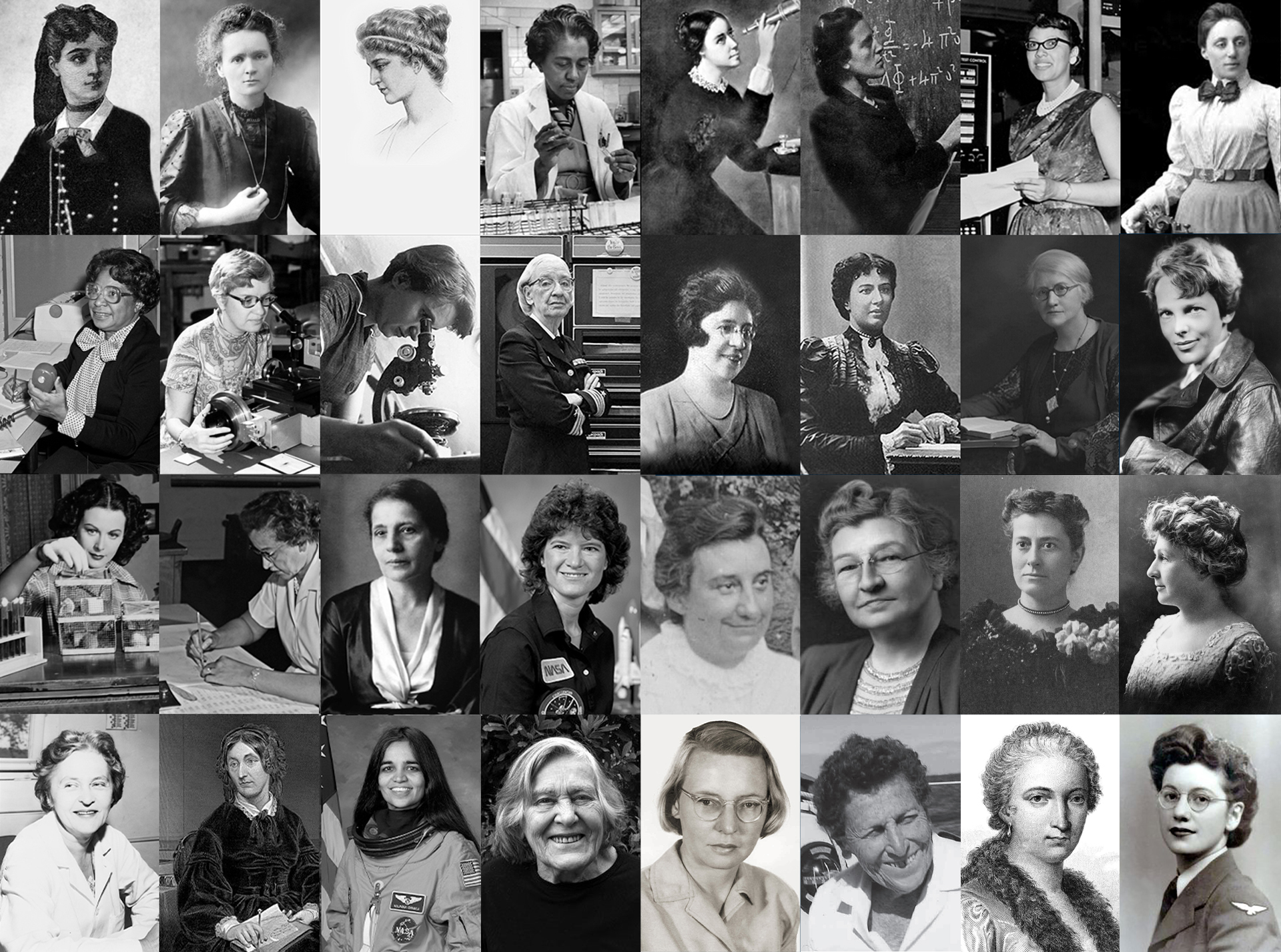
Williamina Fleming (NewSat-33) 1857-1911
Originally from Scotland, Williamina Fleming was a radical astronomer and a champion for opportunities for women in the STEM field. She began her career in astronomy as a supposedly lowly, auxiliary assistant at the Harvard Observatory. However, despite her lack of formal education in the field, she produced numerous important discoveries. During her lifetime, she advocated publicly for the inclusion of women assistants in astronomy labs.
Annie Jump Cannon (NewSat-36) 1863–1941
Annie Jump Cannon was an American astronomer who led the development of the Harvard spectral classification scheme for stars, which revolutionized our understanding of the cosmos–something she accomplished while working to complete the Henry Draper Catalogue, documenting 225,300 stars (1918-1924).
Cannon was also a suffragist and became the first woman to receive an honorary doctorate of science from Oxford University.
Joan Clarke (NewSat-37) 1917–1996
Joan Clarke was a British cryptanalyst who played a pivotal role in breaking the Enigma code during World War II. Despite being among the few women in the field, Clarke’s contribution to the Bletchley Park team was instrumental in their success. After the war, she developed an interest in numismatics and established the sequences from gold and silver coins that had circulated in Scotland five centuries prior. Clarke was appointed as an MBE for her wartime efforts.
Maria Gaetana Agnesi (NewSat-38) 1718–1799
Maria Gaetana Agnesi was an Italian mathematician who published works in an accessible tone about topics such as logic, chemistry, astronomy, celestial mechanics, and Newtonian theory. Her handbooks for learning algebra were used in Europe for half a century.
Agnesi was also a philosopher and theologian, and in her later life, she devoted herself to humanitarian work, founding a home for the poor and sick. Several landmarks—both physical and theoretical—are her namesake, such as the Agnesi crater on Venus.
Tikvah Alper (NewSat-39) 1909–1995
Tikvah was a pioneering South African physicist and radiobiologist who discovered the infectious agent causing scrapies disease in sheep did not contain genetic material, challenging long-held beliefs about replication. Her work was instrumental in developing the prion theory, which explains how proteins can misfold and cause disease.
As a married woman, she could not hold academic position, but continued her work in a small lab at home. She would later lose her job at the National Physics Laboratory in 1951 because she openly opposed apartheid. Despite persistent obstacles, Alper always forged new paths to pursue her work.
Carolyn Shoemaker (NewSat-40) 1929 – 2021
Carolyn was an American astronomer credited with discovering and identifying the most comets during her lifetime, 32 in total, as well as over 500 asteroids.
Carolyn’s most notable discovery was the Comet Shoemaker–Levy 9, the first comet observed orbiting a planet, Jupiter, instead of the sun. The comet broke apart in July 1992 and collided with Jupiter in July 1994, providing the first direct observation of an extraterrestrial collision of Solar System objects and helped lead to the creation of NASA’s Planetary Defense Coordination Office.
Cecilia Payne-Gaposchkin (NewSat-41) 1900-1979
Cecilia was a British-born American astronomer and astrophysicist who achieved two Harvard firsts: she became the first female professor, and the first woman to become department chair.
Payne-Gaposchkin proposed in her 1925 doctoral thesis, entitled Stellar Atmospheres, that stars were composed primarily of hydrogen and helium and established that stars could be classified according to their temperatures. By calculating the abundance of chemical elements from stellar spectra, Cecilia’s work was fundamental in the development of the stellar atmospheres fied.
Maria Wonenburger (NewSat-42) 1927-2014
Maria was a Galician mathematician who did research in the United States and Canada with work centered on Group Theory, Clifford Algebras and Lie’s Algebra.
Wonenburger was the first Spaniard to obtain a Fulbright scholarship for doctoral studies in mathematics, studying at Yale. Later, she became the first female professor of mathematics at the University of Toronto overseeing the thesis of Kac-Moody Algebra which is of particular importance in mathematics and theoretical physics.
Rose Dieng-Kuntz (NewSat-43) 1956-2008
Rose was a Senegalese computer scientist specializing in artificial intelligence and was the first woman from Africa to be admitted to and earn a doctorate at the Ecole Polytechnique.
Dieng-Kuntz was a leading authority in artificial intelligence, knowledge management and the semantic web. She was among the first scientists to recognize the true potential of the Internet, and of XML as a powerful tool for sharing information for generations to come.
Maria Mitchell (NewSat-44) 1818–1889
Maria was an American astronomer and the first woman to work as a professional astronomer in the United States. In 1847, Maria Mitchell made a significant discovery: using a telescope, she observed a blurry object in the night sky that turned out to be a comet. This discovery brought her international acclaim. The comet she discovered is known as “Miss Mitchell’s Comet.” Maria Mitchell was a pioneering figure, opening doors for women in the field of astronomy. Her life and work stand as a testament to her dedication to science, education, and gender equality. She remains an inspiration for those aspiring to break barriers in the field of astronomy.

